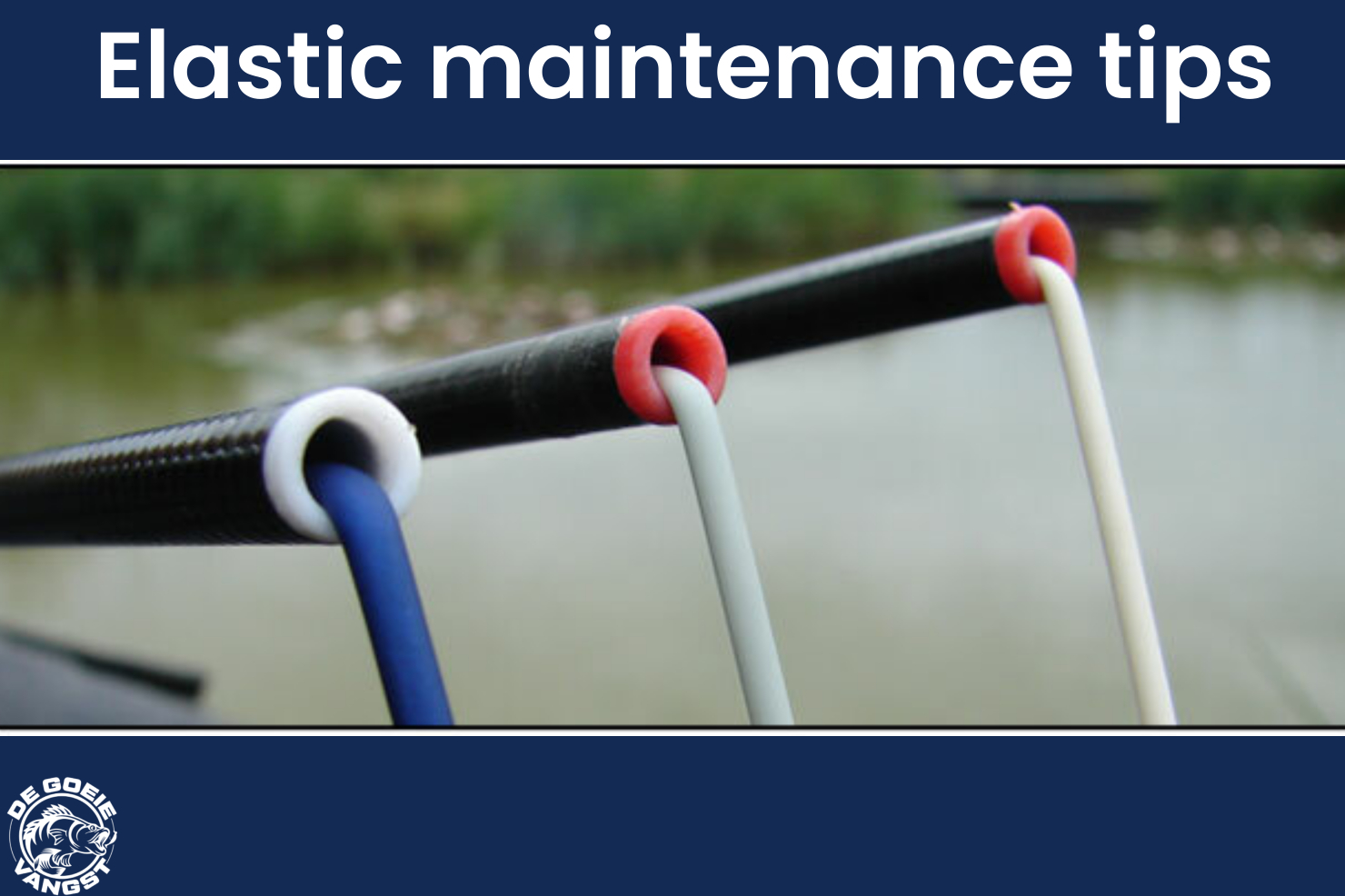Tips for Maintaining and Changing Elastic in a Pole Rod

Proper maintenance and timely replacement of the elastic in your pole rod is crucial for an optimal fishing experience. By taking good care of your elastic, you can not only extend its lifespan, but also improve its performance. In this blog, we give you practical tips for maintaining and replacing elastic in a pole rod.
1. Regular Inspection of the Elastic
Check for Wear
Regularly inspect your elastic for signs of wear, such as tears, fraying or loss of elasticity. Replace the elastic as soon as you notice any wear to avoid breaking it while fishing.
Feel for Unevenness
Feel along the elastic with your fingers to detect any unevenness or rough spots. These may indicate weak points that could cause the elastic to tear.
2. Protection against UV radiation
Avoid direct sunlight
Do not expose your elastic to direct sunlight (UV rays) unnecessarily, as this can make the elastic porous and reduce its elasticity. Store your rod in a cool, dark place when not in use.
3. Use of Lubricant
Lubricating the elastic
Before each fishing session, it is advisable to put a few drops of lubricant into the tip of your rod. This ensures the elastic glides smoothly through the rod and reduces wear and tear.
Applying Lubricant
Take a small piece of sponge, spray it with lubricant, pull the elastic out of the top and rub the elastic with the lubricated sponge. Then let the elastic slip back into the top for even distribution of lubricant.
4. Storing the rod correctly
Storage of rod parts
Always store your rod parts with the connector facing up. This prevents the elastic from rubbing against the edges of the rod and getting damaged.
Use of Protective Covers
Consider using protective sleeves or tubes for your rod parts to provide extra protection during transport and storage.
5. Replacing the Elastic
Step-by-Step Replacement
- Remove the Old Bung: Carefully pull the old bung out of the rod using a bung spanner.
- Pull the Old Elastic Out: Use a tube threader to pull the old elastic out of the rod.
- Attach the New El astic: Follow the steps for attaching the top bushing, threading the elastic and securing the bung.
- Check the Tension: Make sure the new elastic has been tensioned correctly by gently pulling it out and returning it. If necessary, adjust the bung to obtain the correct tension.
6. Tips for Changing Elastics
Use Quality Materials
Invest in high-quality elastics and accessories. This will not only ensure a better fishing experience, but also prolong the life of your equipment.
Take the Time
Assembling and replacing elastic correctly requires patience and precision. Take the time to perform each step carefully to avoid mistakes.
Conclusion
Proper maintenance and timely replacement of elastic in your pole rod is essential for optimal fishing experience. By regularly inspecting your elastic, protecting it from UV rays, lubricating it with lubricant, and storing it correctly, you can maximise the life and performance of your elastic. Follow the steps for replacing elastic carefully to ensure your rod is always in top condition. With these tips, you will be ready to fish successfully and enjoyably.
